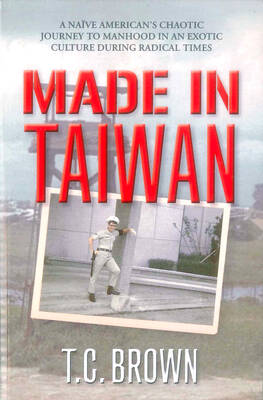Tiffany Finnegan loves what she refers to as her “healthy glow.” The 30-year-old South Boston resident is smitten with self-tanning products and regularly applies the lotions and sprays to keep her skin looking beach-resort dark year-round.
Her mother, however, has a different take on her daughter’s tan from a can.
“She makes me crazy whenever she comes home for a visit,” says Joyce Finnegan, who lives outside Syracuse. “Between the sprays, lotions, and creams, my bathroom has an orange haze when she’s done. The fake tan has become an obsession. She is a ‘tanorexic,’ but we love her, no matter what shade of orange she is.”
That orange hue has become increasingly common as the number of sunless tanning products on the market has risen and as influential Hollywood stars go under the spray gun. Sales of self-tanners in the US have skyrocketed in the past five years. In 2003, sales totaled US$53 million. By 2008, sales surpassed US$200 million, according to market research group Mintel International Group, Ltd, which anticipates those numbers will continue to rise this year.
But you don’t need market research and sales figures to prove that the world is becoming a little more orange all the time. Stroll the South Shore Plaza on a Saturday night or walk down Commonwealth Avenue near the Boston University campus and you’ll see ocherous faces peering out from behind flat-ironed hair.
Yes, sunless tanners, which darken the skin by staining the outer layer with dihydroxyacetone, a natural sugar derivative, are safer than lying in the sun or logging time in a tanning bed, says New York dermatologist Jeannette Graf. But there’s an unwanted side effect for those who use too much self-tanner: They wind up as tangerine-colored as Donald Trump.
They may think they resemble a deeply bronzed Cindy Crawford on a Palm Springs golf getaway, but the truth is, these chronic tanaholics look artificial. US President Barack Obama ribbed House minority leader and preternaturally tanned John Boehner at the White House Press Correspondents’ Dinner recently, joking that Boehner “is a person of color, just not a color that is found in nature.”
Over-tanning, like obsessive teeth whitening and overzealous eyebrow plucking, is a year-round problem. But in late spring, as women — and plenty of men — prepare for bathing suit season, the number of imitation tans begins to climb as rapidly as the pollen count.
“There is a bit of overdoing it out there, and they end up looking orange,” says Ulana Nosal, store manager at Fresh on Newbury Street. “The funny thing is, I don’t think they realize they look orange. They think that they look good and that their color looks natural.”
Jimmy Coco, a former Chippendales dancer who now runs a Los Angeles-based tanning business charging US$350 per spray-tan session at a client’s home, says he’s been told by clients who have experienced bad spray tans that they’d rather look artificial than pasty white. In Hollywood, a good spray tan has become as important as the right purse, and tanners such as Coco can charge top dollar because they keep their clients looking sun-kissed rather than dyed.
“I guess orange is acceptable to people, and for the longest time that was the only option,” he said. “In some light that color may look OK, but most of the time it looks really bad.”
Coco, whose client list includes Eva Longoria, Heidi Klum, Victoria Beckham and Katy Perry, says that the current obsession with the artificial tan emerged when Jennifer Lopez began sporting an unabashedly sprayed “bronze goddess” tan five years ago. Not happy to be left looking pale on the sidelines, other celebrities jumped on the bandwagon — with mixed results. Soon, Paris Hilton, Tara Reid and Lindsay Lohan starting showing up in tabloids with varying degrees of spray-tan success, and every Real Housewife and passenger on the Rock of Love bus was going under the tanning gun. (Coco even spray tans the contestants on The Biggest Loser.)
There are a few actresses who maintain alabaster tones — such as Anne Hathaway and Kate Winslet — but they are the exception. For years, milky skin was prized, until Coco Chanel made tanning vogue in the 1920s. Before she came back bronzed from the French Rivera, tans were seen as the mark of the working class. Only the wealthy could afford to wile away the days under parasols.
Later, concerns over skin cancer resulted in Coppertone developing the first sunless tanning product in 1960. It was a stink bomb in a bottle that sold poorly and did little to keep people from the beach. The romance of beach movies in the 1960s and a perpetual Beach Boys sound track kept baby boomers tanning in the 1970s and 1980s, Coco said.
Celebrity makeup artist Brett Freedman, whose clients include Reba McEntire, Kelly Clarkson and Vanessa Hudgens, said sunless tanaholics just don’t know when to stop spraying, smearing, and bronzing.
“There are people who think that they can never be too thin or too blond,” said Freedman. “And then there are people who think that they can never be too tan. The problems you see with these tans now is that there are people who want as much color as possible, so they’ll pick a product that has way too much pigment in it, and apply it as often as possible.”
North Shore psychiatrist Lenore Cantor says she has not treated any individuals who use too much self-tanner, but said she has seen patients who spent too much time in the sun. The patients, who experience body dysmorphic disorder, are convinced that there is something physically wrong with their appearance. Cantor says some of these patients work on getting a deep tan because they think it will make them look better.
“There’s a general perception that a tan means you’re healthy,” she says. “And for people who don’t like their appearance, getting a tan is sometimes seen as a quick fix. Of course the irony is that spending too much time in the sun is anything but healthy.”
While sunless tanning is safer for skin than lounging in the sun or baking in a tanning bed, dermatologist Jeanine Downie says that she does not recommend spray tans for people with asthma or respiratory infections, because they can trigger asthma attacks. For home tanning, she said she has seen some people put self-tanner too close to their eyes and wind up with conjunctivitis. She’s also seen patients ruin some very nice towels.
“Publicly, people are being made fun of who have that unnaturally orange glow,” Downie says. “That shade of orange is a pet peeve of mine.”
Although she’s heard from friends that she’s too dark, too caramel, and, at times, too artificial, Cambridge nurse Janet Perkins says she is not planning to stop her self-tanning regimen any time soon.
“Listen,” she said, “I’ve had plenty of people tell me that my tan is gorgeous. In the winter, they ask if I’ve been on a cruise or on vacation. My friends who make fun of me are just jealous they can’t look this good.”

Aug. 25 to Aug. 31 Although Mr. Lin (林) had been married to his Japanese wife for a decade, their union was never legally recognized — and even their daughter was officially deemed illegitimate. During the first half of Japanese rule in Taiwan, only marriages between Japanese men and Taiwanese women were valid, unless the Taiwanese husband formally joined a Japanese household. In 1920, Lin took his frustrations directly to the Ministry of Home Affairs: “Since Japan took possession of Taiwan, we have obeyed the government’s directives and committed ourselves to breaking old Qing-era customs. Yet ... our marriages remain unrecognized,

During the Metal Ages, prior to the arrival of the Dutch and Chinese, a great shift took place in indigenous material culture. Glass and agate beads, introduced after 400BC, completely replaced Taiwanese nephrite (jade) as the ornamental materials of choice, anthropologist Liu Jiun-Yu (劉俊昱) of the University of Washington wrote in a 2023 article. He added of the island’s modern indigenous peoples: “They are the descendants of prehistoric Formosans but have no nephrite-using cultures.” Moderns squint at that dynamic era of trade and cultural change through the mutually supporting lenses of later settler-colonialism and imperial power, which treated the indigenous as

An attempt to promote friendship between Japan and countries in Africa has transformed into a xenophobic row about migration after inaccurate media reports suggested the scheme would lead to a “flood of immigrants.” The controversy erupted after the Japan International Cooperation Agency, or JICA, said this month it had designated four Japanese cities as “Africa hometowns” for partner countries in Africa: Mozambique, Nigeria, Ghana and Tanzania. The program, announced at the end of an international conference on African development in Yokohama, will involve personnel exchanges and events to foster closer ties between the four regional Japanese cities — Imabari, Kisarazu, Sanjo and

By 1971, heroin and opium use among US troops fighting in Vietnam had reached epidemic proportions, with 42 percent of American servicemen saying they’d tried opioids at least once and around 20 percent claiming some level of addiction, according to the US Department of Defense. Though heroin use by US troops has been little discussed in the context of Taiwan, these and other drugs — produced in part by rogue Chinese Nationalist Party (KMT) armies then in Thailand and Myanmar — also spread to US military bases on the island, where soldiers were often stoned or high. American military policeman